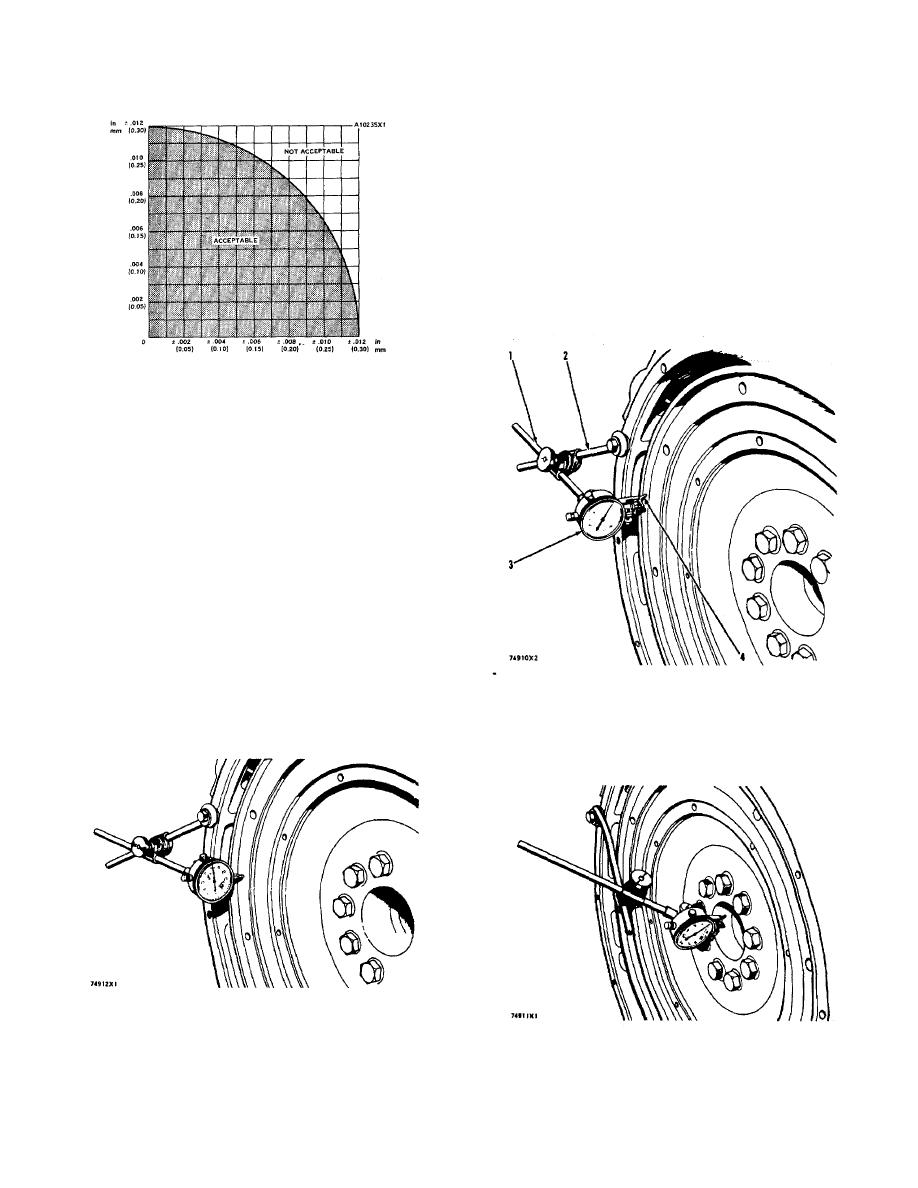 |
|||
|
|
|||
|
Page Title:
Face Run out (axial eccentricity) of the Flywheel |
|
||
| ||||||||||
|
|
 BASIC BLOCK
TESTING AND ADJUSTING
3. Turn the flywheel and read the indicator every 90
.
4. The difference between the lower and higher
measurements taken at all four points must not be
more than .006 in. (0.15 mm), which is the maximum
permissible face runout (axial eccentricity) of the
flywheel.
Bore Runout (radial eccentricity) of the Flywheel
1. Install the dial indicator (3) and make an adjustment of
the universal attachment (4) so it makes contact as
shown.
GRAPH FOR TOTAL ECCENTRICITY
10. If the point of intersection is in the range marked
"Acceptable" the bore is in alignment. If the point of
intersection is in the range marked "Not Acceptable"
do Step 11.
II.
Loosen the bolts holding the flywheel housing to the
cylinder block. Hit the flywheel housing lightly with a
hammer to put it in the correct position. Tighten the
bolts holding the flywheel housing to the cylinder
block and do Steps 1 through 10 again.
Face Runout (axial eccentricity) of the Flywheel
1. Install the dial indicator as shown. Force the crankshaft
the same way before the indicator is read so the
crankshaft end clearance (movement) is always
removed.
CHECKING BORE RUNOUT OF THE FLYWHEEL
2. Set the dial indicator to read .000 in. (0.0 mm).
1. 7H1945 Holding Rod. 2. 7H1645 Holding Rod. 3,
7H1942 Indicator. 4. 7H1940 Universal Attachment.
CHECKING FACE RUNOUT OF THE FLYWHEEL
CHECKING FLYWHEEL CLUTCH
PILOT BEARING BORE
80
|
|
Privacy Statement - Press Release - Copyright Information. - Contact Us |